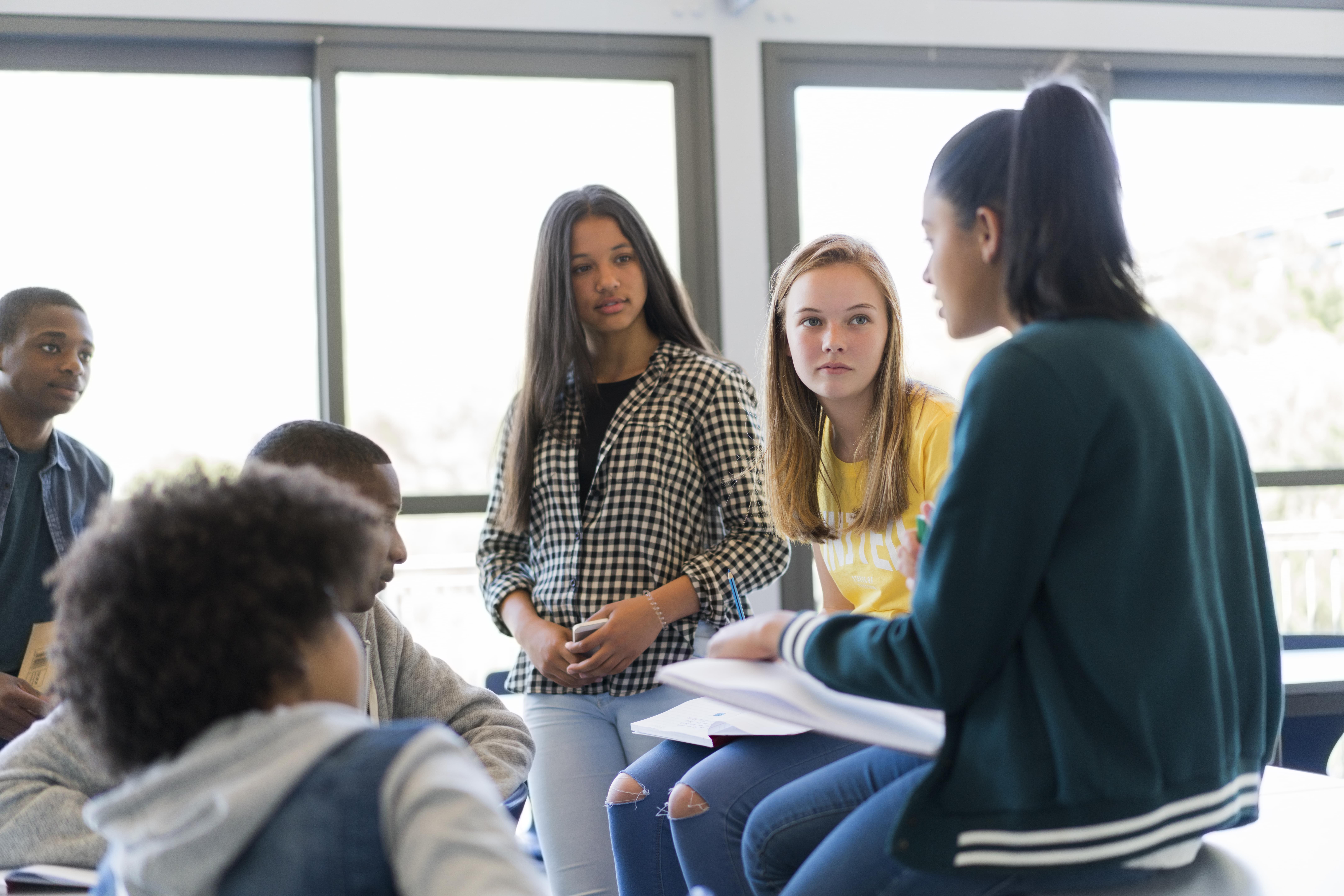Embracing Educational Diversity

Class placement at this East Coast Bays school is guided by a globally-minded outlook and the desire to break down learning barriers.
Increasingly, a school’s educational philosophy has a role to play in how classes are formed and taught. We talk to Deputy Principal Anna-Marie McAleer at Murrays Bay Intermediate about how the school’s mission and values, defined in consultation with the community, are shaping the curriculum and influencing learning outcomes.
Every child is different, so it makes sense that every school should be different, too. Whether your priority is inclusion, excellence, or comprehensiveness, ideally, the way you teach should reflect your school’s vision and values. Not only will you be better placed to achieve your learning objectives, but you’ll also provide the consistency children need to thrive.
At Murrays Bay Intermediate School, a philosophy focused on diversity is guided by the values of honesty, respect, resilience, and kindness. With a population of 1100-plus students, Murrays Bay Intermediate is the third-largest intermediate school in New Zealand and has an esteemed reputation as a top feeder school for Rangitoto College. A strong international contingent and a high demand for out-of-zone enrolment testify to the community’s belief in MBI’s approach.
Deputy Principal Anna-Marie McAleer, a Canadian educator who has worked in and with international schools in Australia, the United States, and throughout Asia, was brought on board specifically for her background in curriculum and multicultural education. NZ Curriculum requires schools to acknowledge New Zealand’s bicultural heritage and history, including Teo Reo Māori and the Treaty of Waitangi, but how above and beyond they go from there is up to them:
“We get to write a local curriculum and design units that bring in the multitude of perspectives and the diverse ethnic backgrounds and views that represent our community,” says McAleer.
Ending class streaming at MBI
The school’s mission is to create “globally competent, globally confident, and culturally intelligent citizens” able to work and live anywhere in the world. Informing every practical decision the teachers and administrators make is the following litmus test:
“Does this practice respect the individual and support his/her development and learning in a way that is kind and empowering, while challenging them to meet their individual potential and build resilience?”
When viewed through this lens, MBI’s decision to eliminate academic streaming from its curriculum makes sense. A study on emerging adolescents underscores that their brain development is geared to respond to positive reinforcement. Separating students by their academic ability, then, seemed to contradict the school’s goal of providing a positive and inclusive learning environment for all.
“You’re sending a very clear message to students about who’s intelligent and who’s not – and that’s a very dangerous message for our kids,” says McAleer. “It perpetuates this idea that you’re born with intelligence and once you’re in that place, you stay there: I’m in the low group, the middle group, or the high group and that’s who I am.”
While MBI’s approach may be different, the high-level objective remains the same. In a previous post, we discussed how academic success depends on every student having the opportunity to learn to the best of their ability. The goal of class placement should always be to create an optimal learning environment for each child, and the faculty at MBI believes this hinges on giving every student access to the same learning opportunities and the chance to be extended no matter what level you are working at.
If class placement is “suboptimal” at any stage, students can easily become disengaged and lose their enthusiasm for learning – paving the way for a lifetime of unfulfilled potential. Self-esteem, once damaged, can put a lid on future success.
If we accept that social connection is essential for mental and physical wellbeing, placing students in classes where they have positive relationships should be just as important as what they know and what they learn. Students with weak friendships are typically targets for bullying and are more likely to be traumatised by emotional or physical abuse.
How Pluto software helps MBI compile class lists
Obviously, not all schools weigh all placement factors the same way, and this is going to vary by age, or where students are in their academic journey. Some schools value streaming, banding students by test results, while others prioritise keeping classes diverse in learning levels, culture, and subjective measures. Rather than structuring classes around subject selection as in secondary school, primary and intermediate schools tend to favour a mix of academic, emotional, and social criteria, including but not limited to:
- Language
- Gender
- Subject achievement levels
- Behavioural factors (social and emotional maturity, leadership qualities)
- Learning needs or disabilities
- Social needs (personality, student friendships, family situations, incompatibility with other students)
- Interests
- Student-teacher compatibility
With so many hard-to-pin-down attributes, class placement software like Pluto can help eliminate the guesswork that can keep you up at night. Pigeonholing students in a way that limits their learning path is the last thing any educator wants. Pluto allows teachers to enter each student’s data, then an administrator can select which weighting factors matter most. For example, they might specify priorities of gender balance, an even spread of maths learners, or English comprehension in a given class.
Whatever your educational objectives, Pluto sorts students based on your specified criteria to create optimised class lists, flagging any issues or incompatibilities for you to address. You can even provide feedback! Without Pluto, considering all these variables could take weeks of discussion, contemplation, and hard work. Now, Pluto’s class placement software simplifies and streamlines the process for you – and the benefit of ALL your students.
Pluto works for Murrays Bay Intermediate and hundreds of other schools around the world. To discover the possibilities for your school, Try our demo now.
